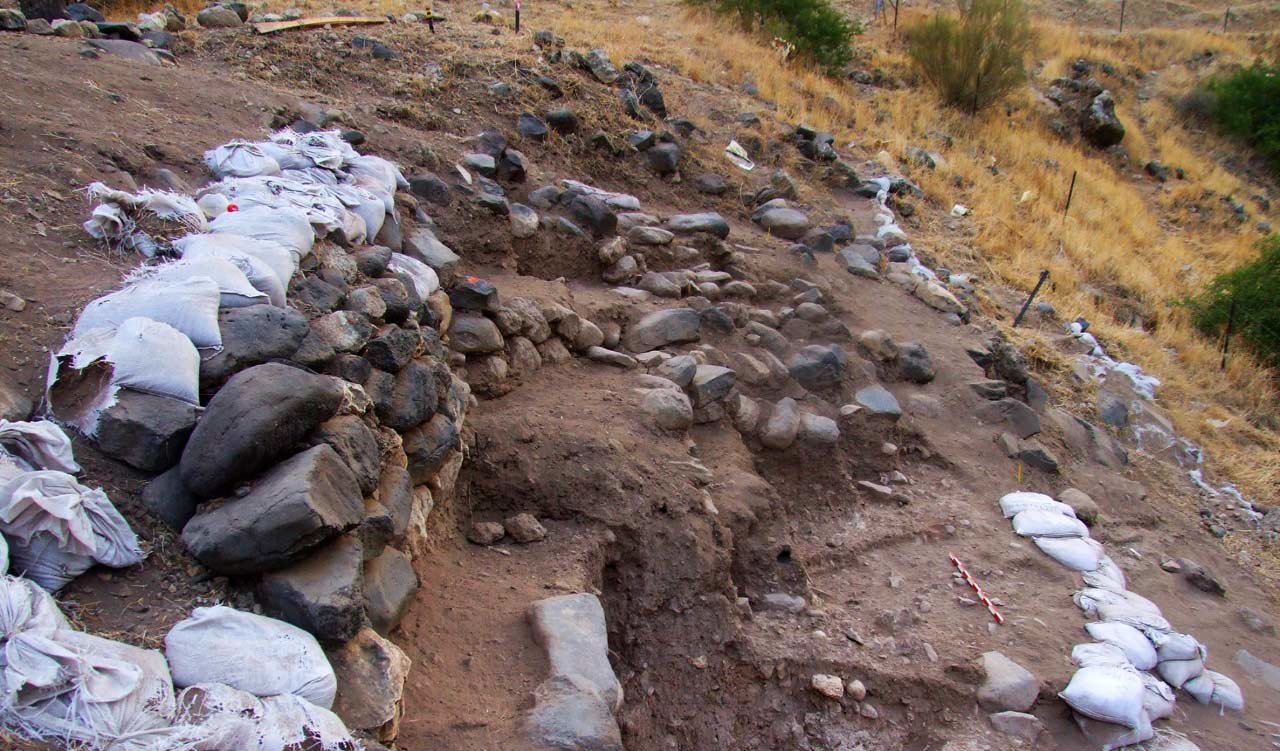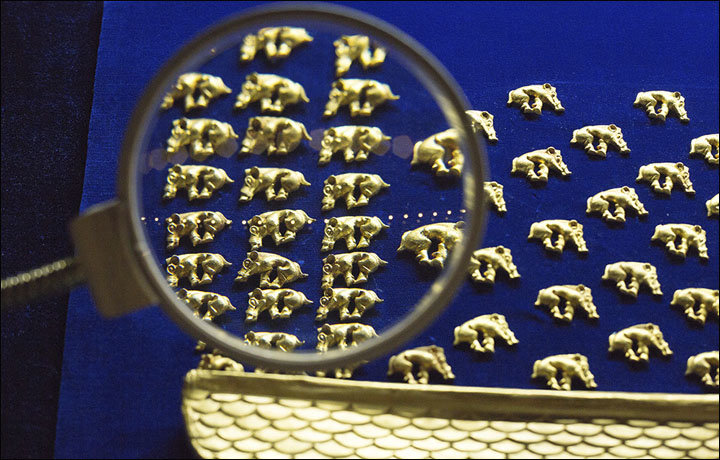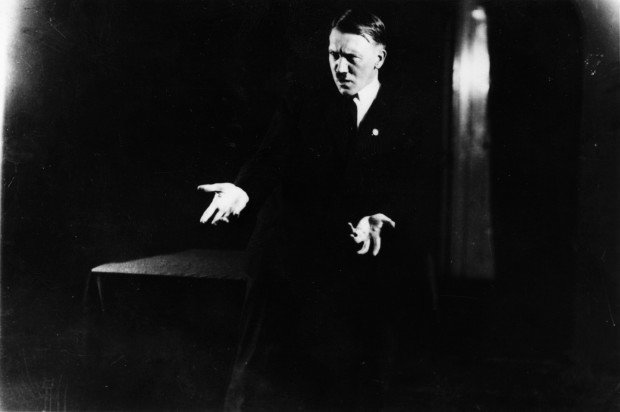
© Grosman L. et alRemains of a Natufian building at NEG II: the wall of this structure is 90 cm high and is the best preserved wall excavated thus far; it is composed of 5 courses of limestone and basalt stones; the wall tilts slightly away from the structure to the northwest and two large stones mark its base at the top of the Natufian occupation level; only the western side of the structure survived, yet the contour of the curve suggests a diameter of at least 5 m.
Archaeologists excavating the Nahal Ein Gev II site in the Jordan Valley, Israel, have
discovered the remains of an ancient settlement of the Natufian culture — a culture that existed from 12,500 to 9,500 BC in the Levant."Nahal Ein Gev II (NEG II) is located in Nahal (wadi) Ein Gev, at the middle of a perennial stream that flows west to the Sea of Galilee," said team member Dr. Leore Grosman, from the Hebrew University of Jerusalem.
"The site is situated on a flat alluvial terrace on the right bank of a prominent meander in the streambed about 2 km east of the Sea of Galilee at the Natufian times."
At NEG II, the archaeologists found human remains, flint tools, faunal assemblage, ground stone and bone tools.
A rich art assemblage including personal ornaments, modeled limestone items and engraved bone and stone objects was retrieved from the site.
"Of the 210 personal ornaments recovered from the site, the majority are beads, mainly disc- or cylindrical-shaped," the scientists said.
"In addition to the personal ornaments, 20 complete and fragmented art objects were recovered."
"Two unique incised stone objects are worth mentioning. The first is a fragment of a limestone object decorated with a linear pattern on all three of its preserved faces. The decorative lines cover the object's entire surface. The linear patterns are slightly different on each face, but all include deeply incised curved lines overlapped by a second layer of more delicate straight lines. The depth and density of the lines suggest a three-dimensionally carved object, although the decorative approach is two-dimensional."













Comment: For more on this topic see: